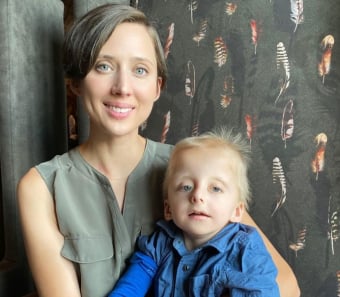SMN1 sequencing is a molecular test used to identify sequence alterations in the gene associated with Spinal Muscular Atrophy, SMA.
3 weeks
81336
$1,000
Spinal Muscular Atrophy (SMA) is a neuromuscular disorder characterized by progressive muscle weakness resulting from the degeneration of motor neurons in the brain and spinal cord. The incidence of SMA is 1 in 10,000 births, and the age of onset and severity are variable. While specific types of SMA have been historically described, phenotypic overlap does occur from one type to another. Congenital SMA (SMA 0) may present prenatally with reduced fetal movement or at birth and is characterized by severe hypotonia, respiratory failure, and absent developmental milestones. Feeding difficulties are common, and death typically occurs by the age of 6 months. SMA I, also known as Werdnig-Hoffman disease, presents in individuals less than six months of age, and associated symptoms include proximal muscle weakness, swallowing issues, and labored breathing. Tongue fasciculations are present in a majority of affected individuals, and death typically occurs by 2 years of age. SMA II appears at 6-12 months of age, and it is characterized by delayed motor development due to muscle weakness, scoliosis, and lung disease. Affected individuals are unable to walk without assistance, but most patients survive to adulthood. Individuals SMA II show delayed motor development due to muscle weakness, scoliosis, and lung disease, and are unable to walk without assistance; however, most patients survive to adulthood. In individuals with onset at greater than 18 months of age (SMA III, or Kugelberg-Welander disease), the majority maintain the ability to walk and have a normal lifespan. The onset of muscle weakness in adulthood (SMA IV) commonly occurs with a course similar to type III. These forms of spinal muscular atrophy are inherited in an autosomal recessive pattern, and most are due to homozygous deletions of at least exon 7 of the SMN1 gene. Typically, the number of copies of SMN2 can modify the phenotype of SMA.
Molecular testing is useful to confirm the diagnosis and to identify the disease causing mutations within a family to allow for carrier testing and prenatal diagnosis.
Sanger sequencing
Up to 5% of patients with SMA may have a sequence variant in the SMN1 gene.
The preferred sample type is 3-5 ml of peripheral blood collected in an EDTA (purple top) tube. Extracted DNA, dried blood spots, and saliva are also accepted for this test. Saliva samples must be submitted in an approved saliva kit. Contact the lab to receive a saliva kit or to have one sent to your patient.
The specimen should be kept at room temperature and delivered via overnight shipping. If shipment is delayed by one or two days, the specimen should be refrigerated and shipped at room temperature. Do not freeze the specimen. Samples collected on Friday can be safely designated for Monday delivery.
Prenatal diagnosis is available if the familial mutations are known. Additional fees for cell culture and maternal cell contamination may apply. Maternal cell contamination studies are required for all prenatal molecular tests. Contact the laboratory prior to sending a prenatal specimen.
Call our laboratory at 1-800-473-9411 or contact one of our Laboratory Genetic Counselors for assistance.
Robin Fletcher, MS, CGC
Falecia Thomas, MS, CGC
Alex Finley, MS, CGC
